
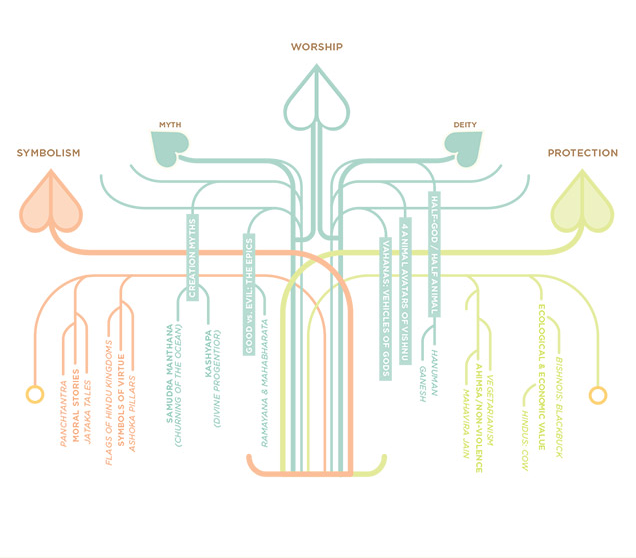
Animania is a vibrant take on the sacred animals of India as interpreted by seven graphic artists from across the globe.
In ancient India, animals were revered - either as deities or as vahanas (vehicles) of deities. They were woven into 3000 years old fables, which along with mythological beliefs, kept alive the Indian tradition of veneration, kindness and non-violence towards all creatures.
The world, as we know, is not what it used to be and modern India is no exception. Although devout associations brought an automatic preservation of the animal world, rapid urbanization has caused degradation of forests and loss of natural habitats. The result is that the animal population is dwindling to alarmingly low numbers.
Animania is a visceral journey to rekindle our love for animals and to create awareness that will build that bridge between our mythological past and a brighter tomorrow.
MORAL STORIES
Animals regularly featured in didactic tales such as the Panchatantra - a compilation of stories that goes back more than 2000 years.
The Jataka tales - a voluminious body of Buddhist literature - illustrate the previous lives of Gautama Buddha, in both human and animal forms.
SYMBOLS OF VIRTUE
Animals made for royal insignia owing to their virility and majestic appearance. For instance: The Lion Capital of Ashoka with four lions facing the four cardinal directions was adopted as the National Emblem of India in 1950.
MYTH
CREATION MYTHS often feature animals. For example: In Hindu philosophy it is believed the world is balanced on the back of a tortoise.
RAMAYANA AND MAHABHARATA - the two great epics - elucidate the battle between good and evil through folk tales in which various creatures play a crucial role.
DEITY
VAHANAS imply the animals and birds that serve as the carriers of gods. These forms can be real, mythological or sometimes, composite. Often these vehicles indicate an undesirable quality that the deity controls by riding on it - or it stands for a good value inherent in that animal/bird that must be adopted by all.
THE DASHAVATARAS OF VISHNU, out of which four are in animal form, roughly correspond to the Evolution theory in the way the incarnations progress.
HALF-GOD/HALF-ANIMAL deities from the Hindu pantheon are an interesting hybrid of man and animal. For instance: Ganpati with his elephant head and Hanuman, the monkey god.
AHIMSA/NON-VIOLENCE
Since Jainism and Buddhism strongly advocated non-violence (and some sects even prohibited meat), the rights of animals to co-exist with man were realised and fauna was automatically protected.
ECOLOGICAL & ECONOMIC VALUE
Communally-protected forest fragments of varying sizes are scattered all over India. They have great religious significance and are believed to be protectors of the community. For instance: For the Bishnoi community in Rajasthan, preservation of animal and vegetable life is a sacred duty and has been so from the early 15th century.
It is said that gods and spirits of the ancestors reside in these protected groves. Hunting of animals and logging is considered an offence to the ruling deity. So, despite growing population most of these forests areas have remained untouched.
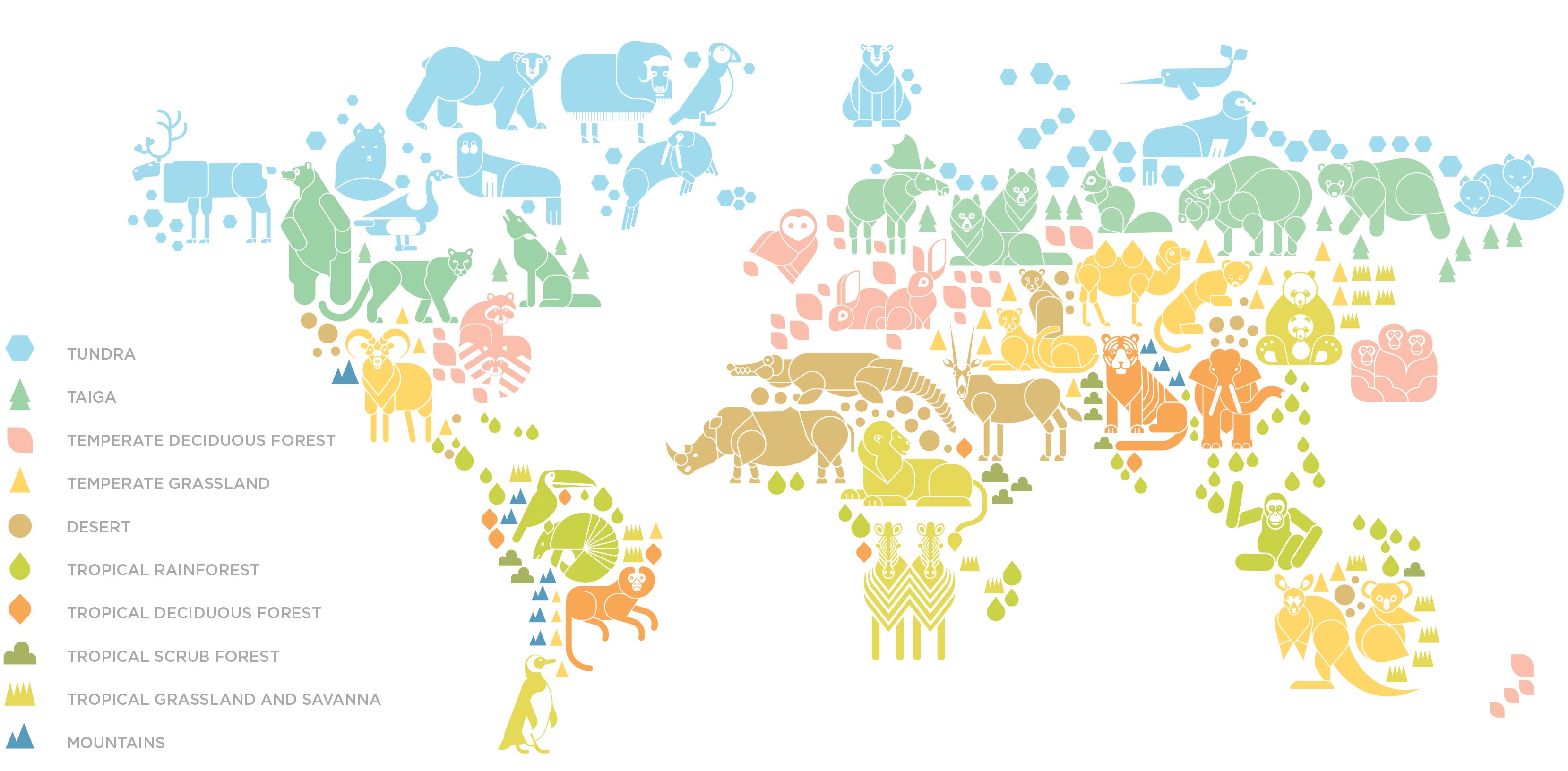


Josh works as a New Media Art Director, balancing corporate clients and fine art. He owns an art and design label, 'Lumadessa' and his work has been exhibited at the Institute of Contemporary Art and the San Diego Museum of Art.
L-R: Asian Elephant, Bengal Tiger Rug

An Argentinean illustrator who first studied comics at Alberto Breccia's atelier and then Graphic Design at the University of Buenos Aires. He considers his style as consisting of "simple pieces combined in a more complex organisation".
L-R: Gharial, Star Tortoise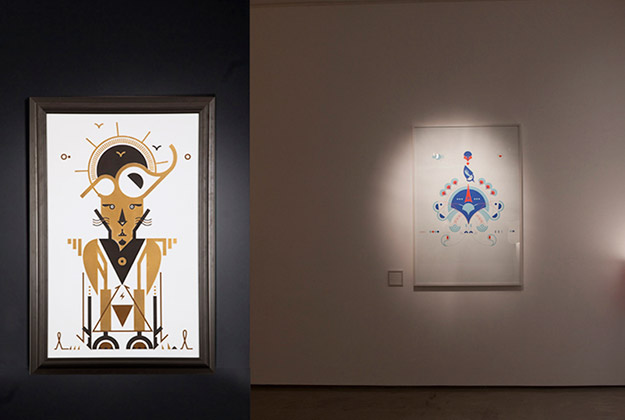

Leandro studied graphic design at the FADU, UBA and has designed some of the most fascinating abstract illustrations for clients like Nike, Ford, KIA, Royal Mail (UK), The Times and Wired. He lives and works out of New York.
L-R: Asiatic Lion, Indian Peacock

Lokesh is a graphic artist working independently from his studio Locopopo, in Mumbai. An alumnus of the Sir J. J. School of Art with specialisation in typography design, Lokesh describes his style as 'explorative and experimental'..
Black Buck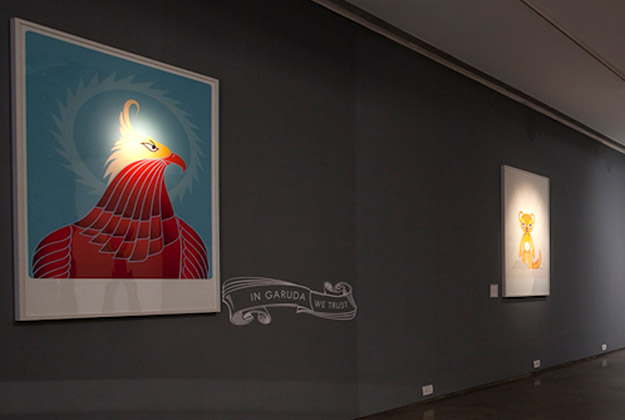

A leading voice for contemporary design in India, Divya is a multi-disciplinary designer. She founded Design Temple in 1999. And has participated in and curated a host of design shows in Mumbai, Delhi, London, Milan, Paris and Stockholm.
L-R: Eagle, Eastern Imperial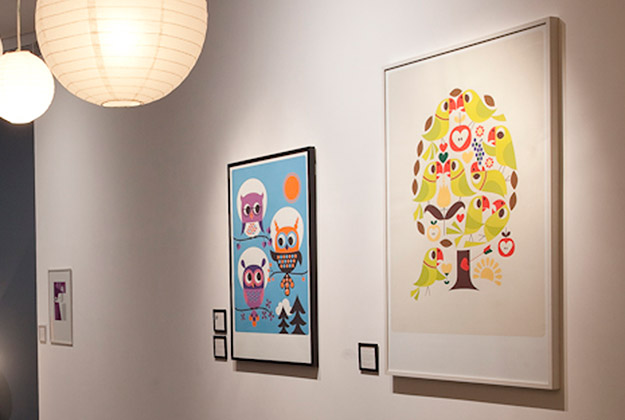

A Stockholm-based freelance illustrator, Ingela is a fan of the design of the 50s and 60s era. She describes her style as 'naive', fresh and uncomplicated.
L-R: Barn Owl, Rose Ringed Parakeet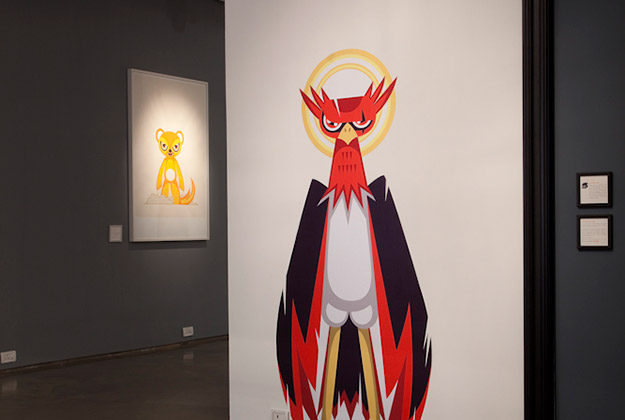

An illustrator and character designer who graduated from the Nippon Designers' School at Kyusyu, Seijiro has worked on projects for Nike Japan, Coca Cola and Citroen, among others and is also a member of the Tokyo Illustrators' Society.
L-R: Vulture and Indian Grey, Mongoose















